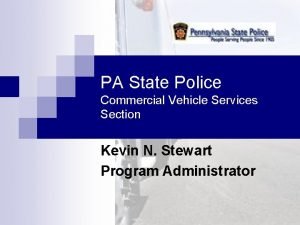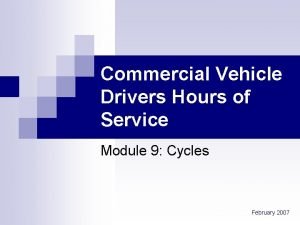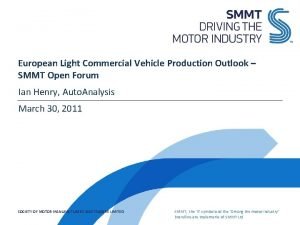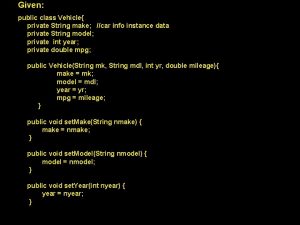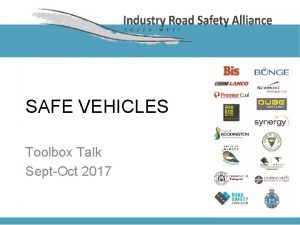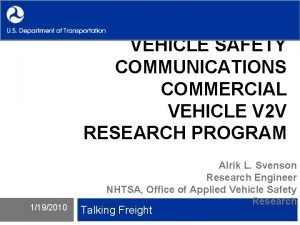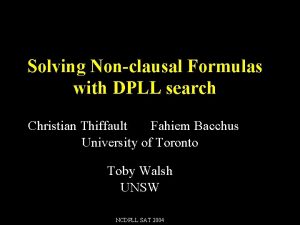HUMAN FACTORS IN COMMERCIAL VEHICLE SAFETY Pierre Thiffault








- Slides: 8

HUMAN FACTORS IN COMMERCIAL VEHICLE SAFETY Pierre Thiffault, Ph. D. Chair of CCMTA’s Human Factors and Motor Carrier Safety Task Force CARSP – Halifax 2016

HUMAN FACTORS AND MOTOR CARRIER SAFETY TASK FORCE 1. Review crash-causation science, identify problems, identify intervention leads in scientific literature; 2. Review current situation in Canada; 3. Generate basic strategy; Ø Purely scientific, risk-based & theory-driven, no policy considerations; 2

SUMMING UP § Studies, data, confirm significant role of driver behavior in 80 -90% of CMV crashes; § Recognition and decision errors are key issues; Ø RE: inattention (fatigue and distraction); Ø DE: Whole spectrum of high-risk behaviors. § Reviewed science for contributing factors and intervention leads, assessed current situation in Canada, drafted set of 45 recommendations. 3

HUMAN FACTORS ENGINEERING § Task design, instrument panel, fleet communications devices, telematics, onboard safety technologies; § Distraction: Inventory current in-vehicle technologies with potential for distraction (OEM and nomadic devices), for driving and non-driving tasks; § Distracting potential; § Development process, human factors guidelines. 4

BEHAVIORAL SCIENCE, PSYCHOLOGY § Hired employees: Interviews/driver selection process, assessment (CTBSSP #21) ; § Entry level training, driver improvement programs, monitoring; § Motivation: Incentive programs, disciplinary processes; § Safety culture and risk, safety management systems, attitudes, subjective norms; § Health and wellness programs. 5

CROSS-CUTTING ACTIONS § Investigate the determinants of the decision to: Ø Keep driving while drowsy; Ø Use distractors while driving; Ø Deliberately engage in risky driving behaviors; § Theory of planned behaviors; § Apply tailored interventions/remedial actions. 6

CROSS-CUTTING ACTIONS § Scrutinize training curricula in light with regards to fatigue, distraction and high-risk driving in light of criteria listed in report; Ø If not covered, develop material, promote inclusion; Ø Should also be covered in testing and licensing. 7

THE HUMAN FACTORS REPORT § 310 pages, more the 500 scientific references, 45 specific recommendations to address fatigue, distraction and high-risk driving; § Report available for free here: Ø http: //ccmta. ca/en/publications/resourceshome/item/addressing-human-factors-in-the-motorcarrier-industry-in-canada Ø Contact: Pierre Thiffault (pierre. thiffault@tc. gc. ca, 613 -993 -8552) 8
